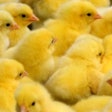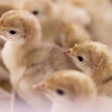The new Cobb Hatchery Management Guide is the latest in updates and introductions expanding on Cobb’s commitment to providing customers with tools to help make quality protein accessible, healthy, and affordable worldwide. The guide includes the company’s latest recommendations based on breed performance, current scientific knowledge, and practical field experience from around the world.
“Cobb wants to ensure our customers have every tool they need to help them succeed and help to ensure our products reach their highest potential,” said Cody Polley, director of world tech support at Cobb-Vantress. “At Cobb, our customers understand we are working hard every day to give them the support and guidance they need to support the very best outcomes of every single flock.”
The guide covers such topics as hatchery humidity, machinery, and cooling systems and has extensive new information as well as important updates.
New information includes:
- How to heat treat eggs for long-term storage.
- Measuring eggshell temperatures for optimal embryo development, including photos and diagrams to support the collection and analysis of the data.
- Assessing and adjusting the hatch window.
- Calculating and using chick yield data.
- Cleaning and disinfecting the hatchery as well as sanitation checks and audits to promote chick health and prevent disease.
- Embryo diagnosis procedures and using the data to troubleshoot on-farm fertility, egg handling, and transport as well as on-site hatchery egg storage, incubation, and hatcher conditions.
Updates to the Hatchery Management Guide include:
- Egg recommendation details including cooling system guidelines.
- Details of hatching egg setting patterns to improve hatchability.
- Formulas and steps to calculate egg moisture loss as well as how to achieve the correct moisture loss in the incubator.
- Measuring, monitoring, and correcting turning angles.
- Adjusting and optimizing the hatcher environment (ventilation, humidity, and temperature).
- Transportation of chicks, including preparation, loading, transporting, delivery, and biosecurity for optimal chick welfare and minimizing stress.
- Maintenance of infrastructure and machinery to keep the hatchery operating in good order.
- Recommendations on building infrastructure including airflow, ventilation, and hygienic design.
“In addition to visits and consultations, these robust guides are among the many ways Cobb supports more yield, better feed conversion, and healthy flocks for our customers,” said Polley.
All management guides and supplements are housed on Cobb’s website and mobile application (Cobb Connection) and include recommendations for grandparent stock, parent stock, and broilers. Among other topics, additional guides cover hatchery, vaccination, brooding fundamentals, grandparent management, and processing procedures. Topic-driven white papers, technical articles, and a full range of performance charts are also available. To access these resources, visit www.cobb-vantress.com/resource.

















